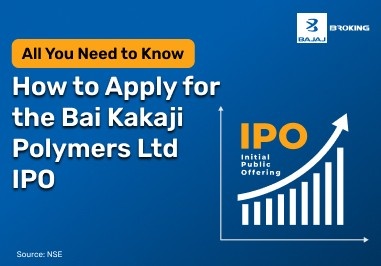Candlestick Pattern explained
A candlestick pattern is a graphical representation of price movements within a specific time frame. Each candlestick consists of four key data points: open price, close price, high price, and low price. The open price represents the starting value of an asset within the given time frame, while the close price indicates its final value. The high price marks the highest value reached, and the low price marks the lowest value during that session. The difference between the open and close prices forms the body of the candlestick, while the thin lines extending from the body, known as wicks or shadows, indicate the high and low points. By analyzing different candlestick formations, traders can anticipate market trends and make calculated decisions.
How to read candlestick charts for intraday trading
For intraday trading, traders rely on candlestick charts to identify short-term price movements within a single trading session. Each candlestick represents a specific time period, such as one minute, five minutes, or an hour, and provides insight into market sentiment. A bullish candlestick (green or white) indicates that the closing price is higher than the opening price, signaling upward momentum. Conversely, a bearish candlestick (red or black) shows that the closing price is lower than the opening price, suggesting a potential downtrend. The wick (thin line) represents the highest and lowest prices reached during that period, while the body (thicker section) reflects the difference between the opening and closing prices. By interpreting these elements, traders can make quick decisions on buying or selling assets.
Composition of a candlestick chart
A candlestick chart consists of multiple candlesticks, forming patterns that indicate market sentiment. Traders use these patterns to understand supply and demand dynamics, potential trend reversals, and continuation signals.
How to analyse the candlestick chart
Analyzing a candlestick chart involves identifying price trends, recognizing key patterns, and using additional technical indicators for confirmation. The first step is to determine the trend direction by observing consecutive bullish or bearish candles. Next, traders should look for candlestick patterns that signal potential reversals or continuations in the market. Additionally, understanding support and resistance levels helps in identifying key price zones where price movements may change direction. To enhance accuracy, traders often combine candlestick analysis with other technical indicators such as moving averages, the Relative Strength Index (RSI), or Bollinger Bands. A well-rounded approach ensures better decision-making and minimizes trading risks.
Types of candlestick patterns
Candlestick patterns are broadly classified into three categories:
Bullish Candlestick Patterns
These patterns indicate a potential upward trend and often signal a buying opportunity for traders.
- Hammer Candlestick Pattern: The Hammer Candlestick Pattern has a small body with a long lower wick, appearing after a downtrend. It indicates that sellers initially drove prices lower but were overpowered by buyers, pushing the price back up. A hammer suggests a potential reversal to an uptrend, especially when confirmed by a bullish candle in the next session.
- Inverted Hammer: The Inverted Hammer is similar to the hammer but has a long upper wick and a small body at the bottom. It appears after a downtrend and indicates that buyers attempted to push prices higher but faced resistance. However, if the price moves higher in the next session, it confirms the potential reversal to an uptrend.
- Bullish Engulfing: The Bullish Engulfing Pattern occurs when a large bullish candle completely engulfs the previous bearish candle. This pattern signifies strong buying pressure and a potential upward price reversal, particularly when appearing at the bottom of a downtrend.
- Piercing Line: The Piercing Line Pattern consists of two candles—a bearish candle followed by a bullish one. The second candle opens lower but closes above the midpoint of the first candle, indicating a shift from selling pressure to buying interest. This pattern is considered a strong reversal signal.
- Morning Star: The Morning Star Pattern is a three-candle pattern that appears at the end of a downtrend. It starts with a bearish candle, followed by a small-bodied candle (indicating indecision), and concludes with a strong bullish candle. This formation suggests that the downtrend is losing momentum and an uptrend may begin.
- Three White Soldiers: The Three White Soldiers Pattern consists of three consecutive long bullish candles, each opening within the previous candle’s body and closing higher. This pattern signifies strong buying pressure and a sustained uptrend, often confirming the reversal of a previous downtrend.
Bearish Candlestick Patterns
These patterns suggest a potential downward trend and signal selling opportunities.
- Hanging Man: The Hanging Man resembles a hammer but appears at the top of an uptrend. It has a small body and a long lower wick, indicating that selling pressure is increasing. If followed by a bearish candle, it confirms a potential reversal.
- Shooting Star Pattern: The Shooting Star Pattern features a small body with a long upper wick, forming after an uptrend. It suggests that buyers attempted to push prices higher but lost control, leading to a price drop. This pattern signals a bearish reversal.
- Bearish Engulfing: A Bearish Engulfing Pattern occurs when a large bearish candle engulfs the previous bullish candle. It signifies strong selling pressure and suggests a potential downward movement, especially at the top of an uptrend.
- Evening Star: The Evening Star Pattern is a three-candle formation signaling a bearish reversal. It begins with a bullish candle, followed by a small-bodied candle indicating indecision, and concludes with a strong bearish candle, confirming the downtrend.
- Three Black Crows: The Three Black Crows Pattern consists of three consecutive long bearish candles, each opening within the previous candle’s body and closing lower. This pattern signals strong selling pressure and a potential downtrend continuation.
- Dark Cloud Cover: The Dark Cloud Cover Pattern forms when a bearish candle opens above the previous bullish candle but closes below its midpoint. This suggests that selling pressure is overcoming buying momentum, indicating a bearish trend reversal.
Continuation Candlestick Patterns
These patterns suggest that the current trend will continue rather than reverse.
- Doji: A Doji occurs when the open and close prices are nearly equal, resulting in a small or non-existent body. This pattern indicates market indecision and can signal either a trend continuation or reversal, depending on the context.
- Spinning Top: The Spinning Top has a small body with long upper and lower wicks, showing market uncertainty. It suggests that both buyers and sellers are active, but neither has control, often leading to a continuation of the existing trend.
- Falling Three Methods: The Falling Three Methods Pattern is a bearish continuation pattern. It begins with a strong bearish candle, followed by three smaller bullish candles that stay within the first candle’s range. A final bearish candle confirms the downtrend.
- Rising Three Methods: The Rising Three Methods Pattern is the opposite of the falling three methods, appearing in an uptrend. It consists of a strong bullish candle, three small bearish candles within its range, and another bullish candle confirming the uptrend.
Conclusion
Candlestick patterns are an essential tool for traders to understand market sentiment and predict future price movements. By mastering these patterns, traders can improve their decision-making process, especially in intraday trading. Combining candlestick analysis with other indicators increases the chances of making successful trades.
Ready to apply your candlestick pattern knowledge? Open an account today and start trading with confidence!
Disclaimer: Investments in the securities market are subject to market risk, read all related documents carefully before investing.
This content is for educational purposes only.














